Authors
Chin-Hao Huang

Chin-Hao Huang is assistant professor of political science at Yale-NUS College. Prior to this, he served as researcher at the Stockholm International Peace Research Institute (SIPRI) in Sweden, and at the Center for Strategic and International Studies (CSIS) in Washington, DC. He specializes in international politics, especially with regard to China and the Asia-Pacific region. Huang is the recipient of the American Political Science Association (APSA) Foreign Policy Section Best Paper Award (2014) for his research on China’s compliance behavior in multilateral security institutions. His publications have appeared in The China Quarterly, The China Journal, International Peacekeeping, and in edited volumes through Oxford University Press and Routledge, among others. He has testified and presented on China’s foreign affairs before the US-China Economic and Security Review Commission, and has also served as a consultant for US and European foundations, governments, and companies on their strategies and policies in Asia. He received his Ph.D. in political science from the University of Southern California and B.S. with honors from Georgetown University.
Articles by Chin-Hao Huang
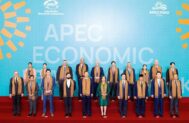
China - Southeast Asia
May — December 2024Beijing Seeks Advantage in US Competition, Leadership Change
China marked the end of 2024 and four years of often intense competition for regional influence with the Biden administration and its allies and partners by continuing strong opposition to outside interference and working to advance China’s leading position among most Southeast Asian governments. The Biden government made significant gains at China’s expense, notably in the Philippines, a contrast with the decline in US regional influence and China’s ascendance that occurred during the first Trump administration. Looking forward, Beijing will seek to advance Chinese influence as a reliable partner and stabilizing presence amid widespread regional and global uncertainties caused by growing economic protectionism, wars in Ukraine and the Middle East, and perceived negative implications of a second Trump administration.
Assessing China, US Regional Influence
Amid surveys showing China’s position as Southeast Asia’s leading power, President Biden in the 2024 presidential campaign repeatedly highlighted his administration’s achievements in checking Beijing’s challenges to the US and ambitions in Asia and elsewhere. US efforts involved domestic strengthening through massive spending bills and working with allies and partners in Asia and elsewhere to counter China’s regional advances at others’ expense. Supporting evidence was provided by Xi Jinping over the past year—reacting to perceived US encirclement and serious domestic problems by compromising with the Biden administration in agreeing to the US government’s longstanding calls for talks with China to set guardrails to manage rising tensions and beginning a modest charm offensive seeking to reduce tensions and stabilize relations with the United States and many US partners and allies, though not Taiwan or the Philippines.
The authoritative annual Lowy Institute Asia Power Index in late 2024 compared US and Chinese regional influence by highlighting China’s inability to close a large gap between its influence and that of the United States on account of slower Chinese economic growth and domestic challenge. Meanwhile, the United States advanced via growing activism and networking with regional partners and strong US economic fundamentals. It noted that China notably narrowed the gap and advanced in influence relative to the United States during the first Trump administration, predicting a similar rise in China’s relative influence was likely under a second Trump presidency.
A report in late 2024 synthesizing the views of 25 Southeast Asian specialists of China’s influence in the region relative to that of the United States showed continued shortcomings in China’s quest for regional leadership. It balanced China’s economic, diplomatic and other advantages with under-appreciated US investments far surpassing China’s and the US emerging as the largest market for ASEAN exports. This reflects anticipated strong US economic growth that contrasts with continued decline in China’s growth rate. It noted regional countries remain ambivalent about China’s long-term ambitions. A summary assessed Beijing as far from dominant with a spectrum of regional countries’ relations ranging from close alignment by Cambodia and Laos to strident opposition by the Philippines, with most others showing differing degrees of attraction and wariness in relations with Beijing.
Meanwhile a CSIS assessment by two Southeast Asian specialists added insight in evaluating China’s influence relative to the United States. Notably, regional governments pragmatically seek closer economic ties with China because economic security is indispensable to regime survival and legitimacy and China is an essential partner in sustaining economic growth.
Leadership Meetings Reflect Continued Strong China-US Rivalry in Southeast Asia
US Defense Secretary Lloyd Austin and Chinese counterpart Defense Minister Dong Jun and his delegation members offered starkly different views of the regional order in their remarks at the annual Shangri-La Dialogue in late May. Austin highlighted US growing military ties with several Southeast Asian and other Indo-Pacific counties while the Chinese speakers denounced the United States as the source of regional tension. They claimed that the US allegedly sought advantage in creating division, provoking confrontation and undermining stability. In a separate meeting with Austin, Dong objected to US support for the Philippines in disputes with China over the South China Sea and US deployment of advanced mid-range Typhon missiles in northern Philippines with a range covering much of southeastern China.
Chinese media in mid-June sharply attacked the G7 Summit statement’s criticism of Chinese actions in the South China Sea disputes. The summit statement took a strong position in support of “lawful” Philippine actions in the disputed South China Sea in the face of “dangerous” Chinese actions based on expansive claims “with no legal basis” and deemed irrelevant by a legally binding award by an UNCLOS arbitral tribunal in July 2016. There followed Chinese media criticism in early July of the 2024 RIMPAC exercises showing US intentions to confront China in the South China Sea and elsewhere with a broad alignment of NATO and Indo-Pacific allies.
Attending the ASEAN Regional Forum and related meetings in Laos on July 27, Chinese Politburo Member and Foreign Minister Wang Yi warned Secretary of State Antony Blinken against US interference in the South China Sea disputes between China and the Philippines.

Figure 1 Chinese Foreign Minister Wang Yi, also a member of the Political Bureau of the Communist Party of China Central Committee, meets with U.S. Secretary of State Antony Blinken in Vientiane, Laos, July 27, 2024. [Photo/Xinhua]
Chinese Prime Minister Li Qiang represented China at the East Asian Summit and related ASEAN meetings in Laos on Oct. 10-11. Secretary Blinken substituted for President Biden, who was preoccupied with the war in the Middle East in the lead-up to the US elections. Chinese media criticized Blinken’s alleged intention to drive a wedge between China and ASEAN. They attacked Blinken’s statement at the US-ASEAN meeting on Oct. 11 referring to “dangerous and unlawful”
Chinese coercive actions in the South China Sea. Chinese and Russian officials blocked a US-supported leaders’ statement on the East Asian Summit seen as challenging China’s broad claim to the South China Sea. Chinese Premier Li and related commentary emphasized the positive in China-ASEAN relations as the two sides announced “the substantial conclusion” of negotiations creating Version 3.0 of the China ASEAN Free Trade Agreement.
Xi Jinping’s prominent role at the APEC summit in Peru and the G20 summit in Brazil put Biden, now a “lame duck,” into the background. At Xi’s meeting with Biden at the G20 summit, both sides made their points on the South China Sea and other disagreements. During the publicized summit meetings, Xi and supporting Chinese commentary emphasized the positive, highlighting China’s commitment to economic globalization as a source of regional and global stability in times of pervasive uncertainty caused by the implications of the second Trump administration and other factors. Chinese experts maintained that Beijing is prepared for adverse moves by the Trump government as Chinese commentary endeavors to exploit angst about a Trump presidency. The commentary argues that export-oriented Southeast Asian economies will face serious negative consequence from Trump’s widely predicted increases in US tariffs.
China-Philippines Tensions over South China Sea Disputes
China-Philippines relations continued to deteriorate with the government of President Ferdinand Marcos Jr. defying Chinese expansionism and intimidation over disputed South China Sea claims. Marcos has sought and received wide ranging US military, economic, and diplomatic support and is backed by US Indo-Pacific allies and partners and supporters in the G7, NATO, and other Western organizations. US and allied backing showed in joint exercises with Philippine forces involving the US, Japan, Australia, Canada, Great Britain, France, and South Korea; a $500 million US military aid package announced in July; and repeated statements of support against Chinese bullying in the South China Sea by these and other governments and organizations. Against this background, tensions rose dramatically over the disputed Philippines-occupied outpost at Second Thomas Shoal ,reaching a highpoint on June 17 when armed conflict broke out among Chinese and Philippines security forces who skirmished with knives and axes near the disputed outpost. The Chinese forces successfully blocked Philippine forces attempting to supply the outpost. Both sides pulled back and sought dialogue. Secret negotiations helped to reduce tensions for a time. Global Times on Sept. 2 that the China-Philippines Bilateral Consultation Mechanism on the South China Sea had met nine times, with the ninth meeting in early July. The eighth occurred in January. Following the July talks, both sides avoided confrontations over Philippine supply missions to the outpost.

Figure 2 Chinese President Xi Jinping and other leaders and representatives from APEC member economies pose for a group photo in Lima, Peru, Nov. 16, 2024. Xi on Saturday delivered an important speech at the 31st APEC Economic Leaders’ Meeting under the title “Shouldering Responsibility to Our Times And Jointly Promoting Asia-Pacific Development.” [Photo/Xinhua]
New confrontations between Philippine supply ships attempting to reach a Philippines Coast Guard vessel anchored at Sabina Shoal since April and Chinese Coast Guard ships pushing them back led to collisions on Aug. 19. The collisions came amid a large show of force of Chinese Coast Guard and Maritime Militia vessels intending to intimidate Manila and force it to withdraw the anchored ship at the Shoal. After the Philippines government on Sept. 14 withdrew the ship, which had stayed at Sabina Shoal since April 17, Chinese commentary approved the move but Philippine spokespersons affirmed that another Philippine ship would be sent to the shoal. Global Times reported on Sept. 18 that the withdrawal of the Philippines Coast Guard vessel from Sabina Shoal was preceded by a meeting of the China-Philippines Bilateral Consultation Mechanism on Sept. 11.
Meanwhile, Scarborough Shoal, occupied by China but claimed by the Philippines, remained a periodic hot spot.
Tensions again rose when President Marcos on Nov. 8 signed into law the Maritime Zones Act and the Philippines Archipelagic Sea Lanes Act that defied Chinese claims to Philippines claimed territories in the South China Sea with legislation consistent with UNCLOS and with the interpretation articulated by the arbitral tribunal on July 2016 ruling against Chinese claims. The US State Department promptly supported the Philippines action while Beijing was very critical. On Nov. 10 the Chinese Foreign Ministry released baselines for territorial sea adjacent to Chinese occupied Scarborough Shoal, a move taken to counter “infringement actions” by the Philippines.
Also raising tensions was the Philippine plan reported in November to purchase the US Typhon advanced intermediate range missile system that has been deployed in the country since April. A Chinese Defense Ministry spokesman on May 30 complained that this “strategic and offensive weapon” will “break strategic balance” in the region and “cause great risk of war” as it endangered targets throughout southeastern China.
Related developments
The spokesperson of the Chinese Embassy in Manila on May 2 rebutted Philippines complaints of April 30 concerning Chinese Coast Guard ships harassing, blocking, and using water cannons against Philippine official vessels entering the 12 mile waters surrounding disputed Scarborough Shoal. Beijing claimed there had been “a temporary special arrangement” that allowed Philippines fishing in areas outside the lagoon but no official Philippines vessels were to enter the 12-mile limit. It said the Marcos government had violated this agreement and past commitments regarding Second Thomas Shoal.
Regarding what it said were secret Philippines-Chinese agreements regulating Philippine supply missions to the outpost at Second Thomas Shoal, the Chinese embassy in Manila released to the media on May 7 the transcript of a two-minute section of a 12 minute phone conversation with a Philippines general on Jan. 3. In it, the general agreed to notify China at least two days ahead of a supply mission to the outpost at Second Thomas Shoal and limit the number of Coast Guard and supply ships to one each for each supply mission. The Chinese Foreign Ministry spokesperson that day also reiterated earlier Chinese claims that “a gentleman’s agreement” on Second Thomas Shoal was reached with former Philippine President Rodrigo Duterte, and claimed that an understanding with the Marcos government was reached at the start of that government. The spokesperson criticized Marcos government for denying such agreements. The Philippines National Security Advisor called for the expulsion of Chinese diplomats over the reported Chinese embassy leak to the media of the Philippine general’s Jan. 3 remarks.
On May 11, the Philippines confirmed it sent a Coast Guard ship to stay at Sabina Shoal amid reports Beijing planned to occupy and develop the Philippine-claimed territory as another South China Sea outpost. Beijing deployed dozens of Coast Guard and Maritime Militia ships to fend off a large flotilla of Filipino fishing boats seeking to challenge Chinese fishing restrictions regarding Scarborough Shoal but the flotilla ended its trip on May 16, well before reaching the shoal. On May 19, the Philippines Navy air dropped supplies to the outpost at Second Thomas Shoal and Philippine officials criticized nearby Chinese Coast Guard forces for retrieving some supplies from the sea and destroying them.
Beijing strongly criticized President Marcos for using his keynote speech at the Shangri-La Dialogue and answers to questions on May 31 to warn China against “acts of war” in the South China Sea. During those remarks, he asserted that if a Philippine service person or a citizen were killed in a willful act, “that is very close to what we define as an act of war.”
The Philippines government on Aug. 13 filed a diplomatic protest charging Chinese jet fighters fired a volley of flares at a Philippine patrol plane over disputed Scarborough Shoal. At that time, Manila had reportedly filed over 150 complaints against the practices of Chinese security forces in the disputed South China Sea since the start of the Marcos government in 2022.

Figure 3 Philippine RHIBs are surrounded and boarded by the China Coast Guard at Second Thomas Shoal. AFP Photo
The Aug. 19 collisions of Chinese Coast Guard ships blocking Philippine Coast Guard ships attempting to enter waters at Sabina Shoal was one of seven scuffles between Chinese and Philippines security forces over the shoal during that month as Chinese rhetoric demanded removal of the anchored Philippine Coast Guard ship at the shoal.
The Philippine Navy reported that in the week Sept. 17-23 that 251 Chinese Maritime Militia, Coast Guard and Navy vessels were active around disputed areas in the South China Sea, the highest levels this year, with 83 deployed to Sabina Shoal and 72 to Second Thomas Shoal.
China-Myanmar Relations
Myanmar junta leader Min Aung Hlaing arrived in China in November for the first time since he launched a coup in February 2021. The junta leader was invited to attend the Greater Mekong Subregion Summit of Leaders in Kunming. While not a state visit, the official reception and meetings with Chinese Premier Li Qiang sent an important signal. China is concerned with the continued instability and civil unrest in Myanmar, especially along the two countries’ borders, and it would like the junta leader to take action to help stabilize Myanmar’s domestic affairs. Beijing also would like to see cross-border trade restored, Chinese investments in Myanmar protected, a timetable for elections to be laid out, and for the insurgents to enter negotiations with the junta.
China has attempted to intervene in various ways. In August, the PLA organized its army units and joint air-ground police patrols near its border with Myanmar in Ruili and Zhenkang to maintain security as fighting between the junta and rebel forces has been escalating. China has also been more involved in conflict mediation. In late November, one of the ethnic minority army groups, the Ta’ang National Liberation Army, announced that it would hold talks with the junta after a year-long battle along the China-Myanmar border. The TNLA acknowledged China’s mediation effort and agreed to halt air strikes in the northern Shan state of Myanmar as it prepares for talks with the junta.
China-Vietnam Summitry
China’s relations with Vietnam were closer in recent months in spite of competing claims and ongoing disputes in the South China Sea. In August, Chinese President Xi held talks with Vietnam’s President To Lam in Beijing. It was Lam’s first state visit since becoming Vietnam’s top leader. The two discussed the importance of maintaining a positive neighborhood diplomacy. Xi pointed to their good working relations and personal friendship as the basis for strengthening party-to-party ties as well as bilateral cooperation. Similarly, Lam described relations with China as a “top priority in Vietnam’s external policy.” In their joint statement, China and Vietnam announced the signing of 14 documents spanning cooperation in cross-border railways to defence and security ties.
In October, Chinese Premier Li Qiang visited Hanoi for meetings with his Vietnamese counterpart and other senior Vietnamese officials. Both countries agreed to carry out feasibility studies for standardizing railway routes and survey activities between Kunming and Haiphong, Guangxi to Hanoi, and a potential new route linking Shenzhen to Haiphong, all of which would increase connectivity, cross-border trade, and people-to-people exchanges.
Even as trade, economic, and business ties deepen between China and Vietnam, the two countries remain at odds over competing claims in the South China Sea. Vietnam maintains actively engaged in dredging and landfill activities in the Spratly Islands, although at a scale that is still smaller than that of China in recent years in the contested waters. Hanoi is also employing gray-zone tactics to counter China’s presence in the South China Sea, having established maritime militias in coastal provinces to support its navy and provided funding to help strengthen and fortify Vietnamese fishing vessels in case they are rammed by Chinese counterparts. For the time being, the maritime dispute is being managed in ways that avoid escalation, which can be attributed in part to Hanoi’s adroit diplomacy of maintaining an arm’s-length relationship with Washington while engaging in pragmatic ways with Beijing.
Indonesia Engages in High-Profile Diplomacy with China and the United States
Relations between China and Indonesia warmed in this reporting period. Within weeks after taking office, Indonesia’s President Prabowo Subianto embarked on his first official state visit to China, meeting with President Xi in Beijing in early November. In their discussion, the two leaders affirmed the state of China-Indonesia relations, with Prabowo stressing how China is an “important friend and partner,” a key reason behind choosing China as his first foreign trip as president. This was followed by the joint announcement of the signing of deals worth $10 billion at the Indonesia-China Business Forum in Beijing, spanning sectors including food, new energy, technology, and biotechnology. The two leaders also agreed to increase more two-way exchanges through the introduction of new visa measures, including multi-entry long-term visas, and more direct flights and destinations.
During the visit, Beijing and Jakarta also inked a maritime development agreement which mentioned that both countries had “reached important common understanding on joint development in areas of overlapping claims.” This signing of the agreement prompted some backlash and controversy in Jakarta, with the Indonesian foreign ministry clarifying that Jakarta is not a claimant state to the South China Sea, and has no overlapping claims or jurisdiction with China. The ministry further reassured that the maritime development agreement would have no impact on Indonesia’s sovereignty.
The high-profile visit to China was immediately followed by Prabowo’s visit to Washington, DC, meeting with President Joe Biden, as well as making a highly publicized call to President-elect Donald Trump. Prabowo said, “I would like to call personally on you wherever you are. I’m willing to fly to congratulate you in person, sir.” In the clip’s backdrop and on Prabowo’s desk was a copy of the China Daily newspaper. Analysts in Southeast Asia discerned a subtle yet important message behind the flurry of state visits and the phone call with Trump: amidst the intensifying geopolitical competition between the United States and China, Indonesia is willing to rally and lead the region, taking on a more visible and active foreign policy while underscoring Indonesia and the region’s centrality and neutrality. Some are even comparing him to Sukarno, Indonesia’s first president and chief architect of the Non-Aligned Movement. As Prabowo’s presidency unfolds, and as US-China competition intensifies in the region, it remains to be seen whether Indonesia can elevate its regional and global stature and further its foreign policy and diplomatic objectives.
Anwar Advances Malaysia’s Relations with China
Malaysian Prime Minister Anwar Ibraham’s two years in power have featured remarkable personal efforts to solidify close relations with China, which has been well received in Beijing. When combined with the Malaysian leader’s consistently strong criticism of US support for Israel in the armed conflicts in the Middle East, Anwar’s activism is viewed by critics in Malaysia and abroad as favoring China in the US-China competition for influence in Southeast Asia, which he denies.

Figure 4 President Xi Jinping meets with Malaysian Prime Minister Anwar Ibrahim in Beijing on Thursday. FENG YONGBIN/CHINA DAILY
2024 marked the 50th anniversary of the establishment of Malaysia-China relations in July 1974. Chinese Premier Li Qiang visited Malaysia in June to celebrate the anniversary. In November, Anwar made his third trip to China since taking power in late 2022. The four-day working visit included a meeting with Xi Jinping and attending the opening ceremony of the seventh annual China International Import Expo in Shanghai.
Both governments have emphasized many positives in the relationship, acknowledging the importance of Malaysia as the incoming chair of ASEAN for the next year and the incoming ASEAN-China dialogue partner coordinator for the next three years. Bilateral trade reached $190 billion in 2023, 17% of Malaysia total foreign trade, with Malaysia ranked as China’s second largest trade partner in ASEAN. China has ranked as Malaysia’s top trading partner for 15 years. By 2023, Malaysia’s cumulative investment in China was $9.2 billion and China’s cumulative investment in Malaysia was $17 billion. Malaysia was one of the top 10 participating countries in China’s Belt and Road Initiative. More than 3 million Chinese tourists visited Malaysia annually prior to the COVID-19 pandemic and 5 million were expected in 2024. In 2023, 40,000 Chinese students were studying in Malaysia and more than 10,000 Malaysian students were studying in China.
Chinese commentary strongly supported Anwar’s decision to apply to join the BRICS during the Russian foreign minister’s visit to Malaysia in July. It noted an adjustment in Malaysia’s nonaligned foreign policy, with “stronger leanings toward China” seen as “a shift from the previous governments that maintained closer ties with western powers.” References to Sino-Malaysian differences over the South China Sea were rare. An exception was the leak in September of a Chinese message to the Malaysian embassy in Beijing in late August demanding a halt of Malaysian survey and drilling efforts in the South China Sea infringing on Chinese sovereignty. Those efforts have persisted despite Chinese opposition and Chinese Coast Guard ships harassing and endeavoring to force the withdrawal of the Malaysians. Anwar said the Malaysian efforts would continue.
China-Cambodia Relations
With strong backing of his father, long-serving former Prime Minister Hun Sen, Cambodian Prime Minister Hun Manet on Aug. 5 presided over a 10,000-person groundbreaking ceremony marking the start of construction of the $1.7 billion, 180-km, China-backed Funan Techo Canal, which will provide Cambodia direct access from the Mekong River to the South China Sea rather than routing through Vietnam’s Mekong Delta. China welcomed the occasion and followed in September with the announced gift of two Chinese naval corvettes to the Cambodian Navy to be delivered by 2025. China has become Cambodia’s primary supplier of modern military equipment outpacing the United States which set an arms embargo targeting Cambodian military officials in 2021. The developments underscored Cambodia’s strong alignment with China even as it endeavored to diversify foreign contacts, including visits by the US Defense Secretary and the Director US Agency for International Development in June and October respectively. In November, however, Reuters reported that Chinese funding for the canal project may be in doubt after Beijing expressed misgivings about the project’s feasibility.
China, Timor-Leste Relations
Xi Jinping on July 1 warmly welcomed Jose Ramos-Horta, president of Timor-Leste, for a four-day visit. This was first visit to China by the president of the country, an applicant to join ASEAN, since China established relations in 2022. China was the first country to establish relations with the country and has more recently signed over 20 Belt and Road Initiative (BRI) projects. The joint communiqué marking Ramos-Horta’s visit emphasized the need for closer ties in various areas, including a section on security relations with China.
Up to now, China has offered low amounts of investment and aid compared with ASEAN countries, Australia, Japan, the EU, and the United States. This stands in contrast with more generous Chinese aid to the Solomon Islands and other small Pacific Island countries. Commenting on the visit, China’s Defense Ministry spokesperson noted that the two militaries have maintained active exchanges and would deepen cooperation including joint exercises and training.

China - Southeast Asia
January — April 2024China’s New Foreign Policy Moderation—Mixed Regional Implications
Incorporating major foreign policy initiatives of leader Xi Jinping, Beijing completed its effort from the past two years with instructions in January on China’s new approach to foreign affairs to Chinese foreign policy officials and others concerned. The new approach added authority and momentum to Beijing’s emphasis since Xi’s summit with US President Joe Biden last November on greater Chinese moderation and restraint as a “responsible” great power pursuing peace and development in dealing with Southeast Asian neighbors and elsewhere. Nevertheless, Beijing remains selective in how it applies moderation, and the record of the past two years shows great swings between moderation and truculence in its approach to foreign affairs, depending on circumstances which remain subject to change. The success of China’s regional importance showed in Singapore’s Institute of Southeast Asian Studies annual survey of regional elites with China viewed as both the leading economic and political-security power, overshadowing the United States, and the judgment that if forced to choose between them, more respondents would select China than the United States.

China - Southeast Asia
September — December 2023Beijing Moderates Criticisms Selectively
Beijing in this reporting period moderated often shrill rhetoric of the past two years criticizing Joseph Biden administration advances and regional governments cooperating with the US. Emphasizing China’s positive contributions to regional economic growth, Beijing stressed its flexibility, said to be different from Washington in not pressing regional states to choose between the US and China, even as it demonstrated ambitions to develop a new regional and global order favorable to itself. Nevertheless, glaring exceptions included egregious pressures to compel deference to China’s claims in the South China Sea, harsh criticism of the Philippines and Japan cooperating closely with the United States, as well as authoritative foreign policy statements giving regional governments little choice between two paths forward: cooperation with an avowedly beneficial China or America’s purported exploitative, divisive and destructive initiatives. Regarding the Philippines, an unprecedented show of support by the US for the territorial claims of its treaty ally resulted in an equally unprecedented pushback from Beijing.
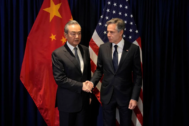
China’s recently recognized position as Southeast Asia’s leading power faces growing challenges from efforts of the Biden administration to counter Chinese ambitions and advance US regional influence. Beijing has stuck to practices of strong diplomatic engagement, economic enticement, and a range of coercive measures that have been broadly successful in the past but seem to have failed badly in the Philippines, now moving into the US orbit.
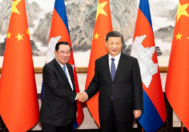
China - Southeast Asia
January — April 2023China Strengthens Regional Leadership Countering US Challenges
Southeast Asia featured prominently in Beijing’s increasingly strong international efforts to portray China as a source of strategic stability and economic growth with comprehensive global governance plans supportive of interests of developing countries and opposing the United States. These efforts intensified after the landmark 20th Party Congress in October and the 14th National People’s Congress in March. They were reinforced as Xi Jinping emerged from COVID restrictions and preoccupation with domestic matters to engage actively in summitry with leaders of Vietnam, Laos, the Philippines, Cambodia, Malaysia, and Singapore. China’s economic importance for regional countries grew as did its dominance over the contested South China Sea. Its show of force against Taiwan in April had little discernible impact on China-Southeast Asia relations, while notable US advances in military cooperation with the Philippines warranted Chinese warnings that escalated during the reporting period.
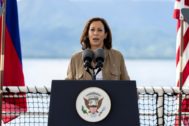
China - Southeast Asia
September — December 2022Xi Moderates to US and Others Amid Continued Competition
Southeast Asia was the center of international attention in November as regional and global leaders gathered at the G20 conference in Indonesia, which took place between the annual ASEAN-hosted summit meetings in Cambodia and the yearly APEC leaders meeting in Thailand. Acute China-US rivalry loomed large in media and other forecasts, warning of a clash of US-Chinese leaders with negative implications feared in Southeast Asia and elsewhere. The positive outcome of the Biden-Xi summit at the G20 conference and related actions eased tensions, which was welcomed, particularly in Southeast Asia, but the implications for the US and allies’ competition with China remain to be seen. Tensions over disputes in the South China Sea continued unabated. President Xi Jinping made his first trip to a major international gathering at the G20 conference followed by the APEC meeting after more than two years of self-imposed isolation in line with his government’s strict COVID-19 restrictions.
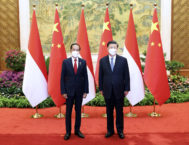
China - Southeast Asia
May — August 2022Countering US Initiatives, Taiwan Crisis Complications
Chinese enhanced activism in Southeast Asia in this reporting period focused on countering Biden administration efforts to enhance influence in the Indo-Pacific. The Chinese government intensified its depiction of the United States as disrupting regional order and portraying itself as the regional stabilizer. Beijing’s effort faced complications and uncertain prospects as Chinese military forces in August launched large-scale provocative shows of force amid strident media warnings targeting the United States over Taiwan.
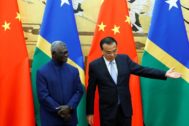
China - Southeast Asia
January — April 2022Diminished Priority As Ukraine Distracts America
Southeast Asia stopped being China’s high priority as Beijing viewed US initiatives to compete with China in the region as flagging amid preoccupation with the war in Ukraine. Chinese diplomacy added to the reasons Southeast Asian governments generally eschewed support for US-backed sanctions against Russia and carefully avoided major controversy in UN votes on the Russia-Ukraine conflict. A Chinese-Solomon Islands security deal resulted in more US and allied attention to the Pacific Islands than ever before, surpassing rare past instances of concern over interventions by the Soviet Union, Libya’s Muammar Gaddafi, and others in an area usually considered of low strategic importance.
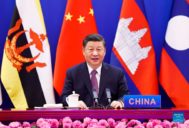
China - Southeast Asia
September — December 2021China’s Growing Influence Overshadows US Initiatives
Beijing’s extraordinary high-level attention to Southeast Asia since last year continued in the current reporting period. It culminated in President Xi Jinping presiding over a special summit he convened to commemorate the 30th anniversary of ASEAN-China dialogue on Nov. 22, which featured an array of Chinese advances. Keenly attentive to US efforts to reverse its recent decline and compete more effectively with China in Southeast Asia, Beijing has relied on ever-expanding Chinese influence in Southeast Asia to eclipse and offset US initiatives. Beijing faced a setback when Philippines President Rodrigo Duterte sharply rebuked Chinese coercion in the disputed South China Sea during the November summit. Similarly, China’s role in the political turmoil in Myanmar got noticeable pushback from ASEAN leaders as the humanitarian situation in Myanmar remains unstable.
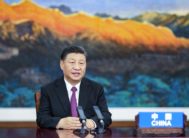
China - Southeast Asia
May — August 2021Pushing Regional Advantages Amid Heightened US Rivalry
China’s recognition of the strategic challenge posed by close Biden administration relations with the Quadrilateral Security Dialogue (Quad) powers Australia, India, and Japan reinforced Beijing’s strong efforts to preserve and expand its advantageous position in Southeast Asia in the face of rising competition with the United States. Beijing used uniformly critical coverage of US withdrawal from Afghanistan to highlight US unreliability, and attempted to discredit Vice President Kamala Harris’ Aug. 22-26 visit to the region, the highpoint of Biden government engagement with Southeast Asia. It also widely publicized evidence of China’s influence in the competition with the United States in Southeast Asia, even among governments long wary of China, like Vietnam. That effort underlined the lengths Vietnam would go to avoid offending China in reporting that Hanoi allowed the Chinese ambassador to publicly meet the Vietnamese prime minister and donate vaccines, upstaging Vice President Harris, who hours later began her visit and offered vaccines.